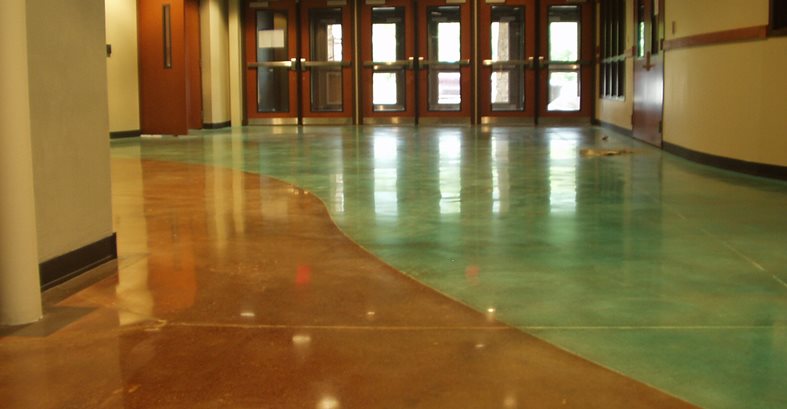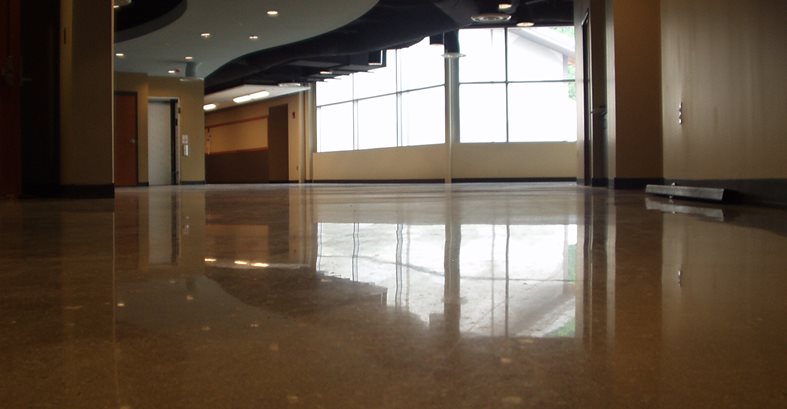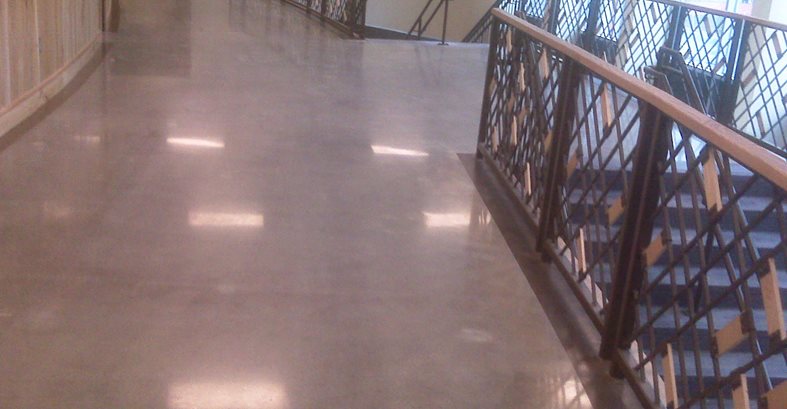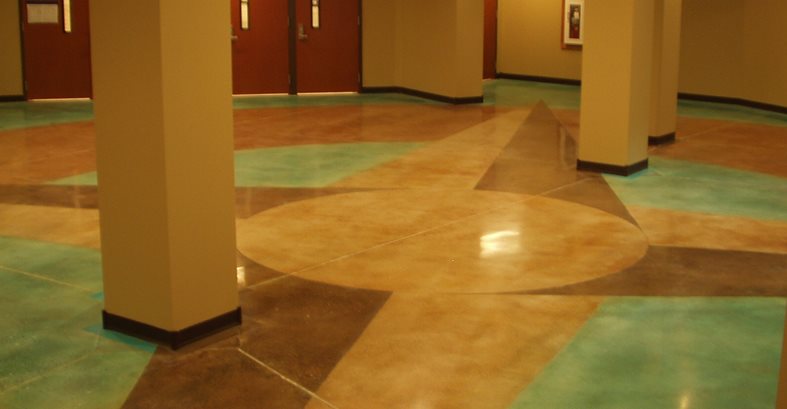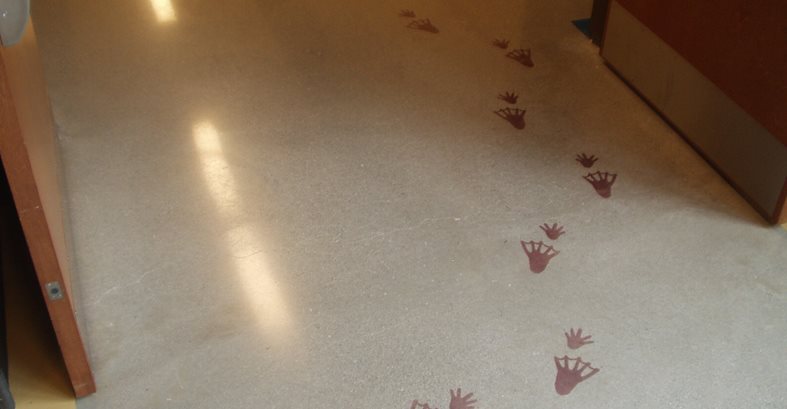While walking through the corridors of the Cherokee Indian School, Cherokee, N.C., students and visitors can get a visual education in the folklore of the Cherokee Indians. The polished concrete floors display legendary symbols of Cherokee mythology, including a flowing river, a compass, a water beetle and animal footprints (learn the story behind these Cherokee legends). In fact, the school chose polished concrete flooring because of the versatility it permitted in creating these graphical representations, along with its ease of maintenance, says Leonard Hartford of Caroline Concrete Floor Polishing, the contractor hired to polish the school’s 86,000 square feet of corridor and lobby floors. Another important objective was to obtain LEED certification, and a polished concrete floor would help the school achieve that status.
Although the concrete floors were newly placed, the project wasn’t without its challenges. “The floor conditions varied substantially, to a reasonably flat floor all the way up to rain damage that required substantial repair. In nearly 75% of the floor, we had to use a liquid grout to fill in voids and damage from construction,” says Hartford. “The most difficult aspect was trying to accomplish our work while building construction was still underway, and in some cases having to polish prior to walls being erected. The only way to do this with so many other trades was to work with them and assist them in their needs to gain their respect and cooperation.”
Design goals
In the main building entrance, the school wanted a river running through the large, open U- shaped corridors, with earth on either side. It was important that the water had the appearance of movement. The school also wanted a huge water beetle rising from the river in the lobby area and a 40-foot compass outside the gymnasium entrance.
“At the entrance of each corridor in the elementary wing, we also dyed and stenciled animal footprints representing the students’ age groups. The prints included ants, beavers, bears, deer, and turkeys,” says Hartford. “In the Cherokee nation, each young child has an animal for their age group. The footprints were fun and interesting to do.”
Secrets to success
The polishing crew started grinding the concrete floor with a 40-grit diamond and progressed through an eight-step process to finish it to a 3000-grit shine. The polishing took place over the course of nearly nine months, with the crew doing the work in sections as the school was being completed.
Creating the water beetle design required the use of 29 stencils, which were overlaid on top of a masking stencil that protected the area from the stains and dyes used to make the river. “We had to use dyes from two different suppliers and then custom mix them to achieve the colors required for the beetle,” says Hartford. He also custom designed all the stencils and had them made by a local screen printing company.
The 40-foot compass in the entrance lobby to the gymnasium was score cut by hand and stained using a combination of Scofield concrete stains in terracotta, antique amber, padre brown, and copper patina. All the artwork and staining were done at the 400-grit polishing stage, after which the floors were shined up to 3000 grit.
The floors, completed several years ago, are a big hit with the students and those involved on the project. “We received very favorable comments from the general contractor, the other subs, the school board and the architect,” says Hartford. The project also received LEED Silver certification.
Materials and equipment used
Floor polishers: HTC 800 grinders, from HTC Professional Floor Systems
Concrete stains and dyes: Scofield and Ameripolish products
Stencil manufacturer: Spartan Custom, Roebuk, S.C.
Concrete densifier: Eucosil, from Euclid Chemical
Polish guard: PolishGuard, from Prosoco
Polishing contractor
Leonard Hartford
Carolina Concrete Floor Polishing, Spartanburg, S.C.
Learn more about concrete school floors
